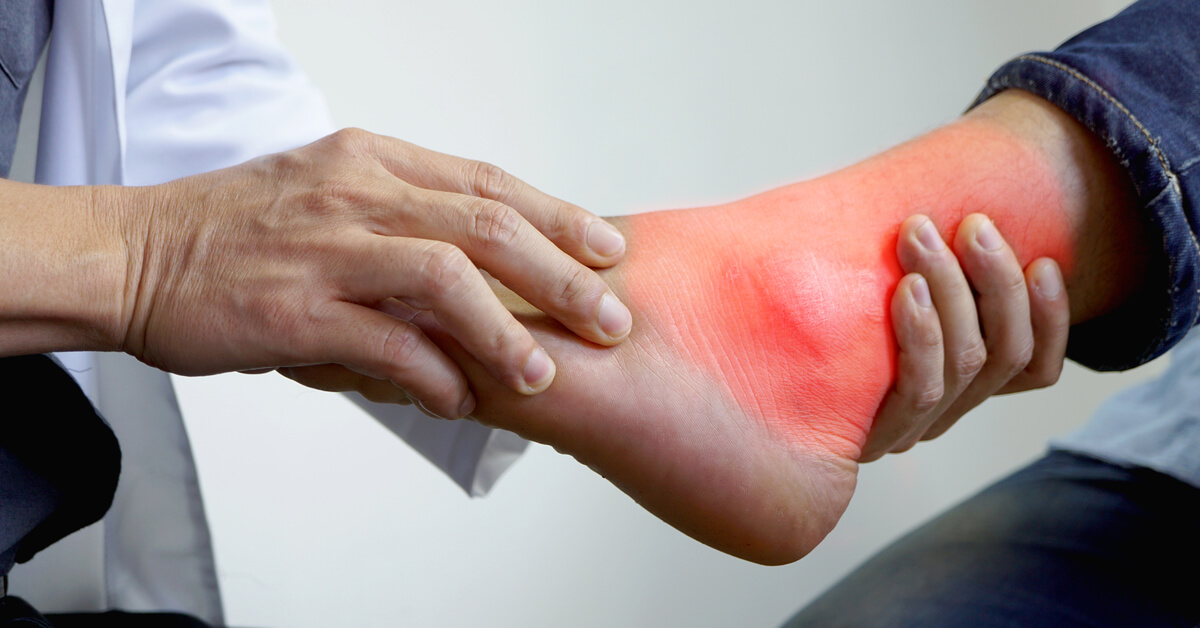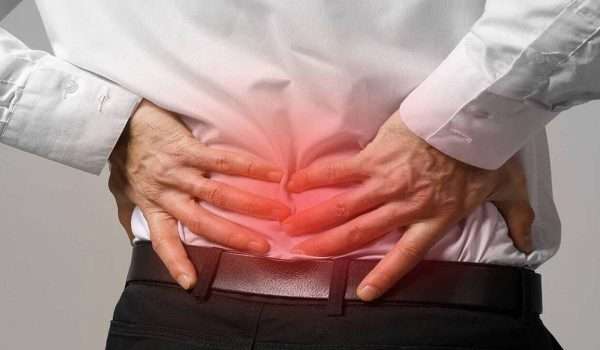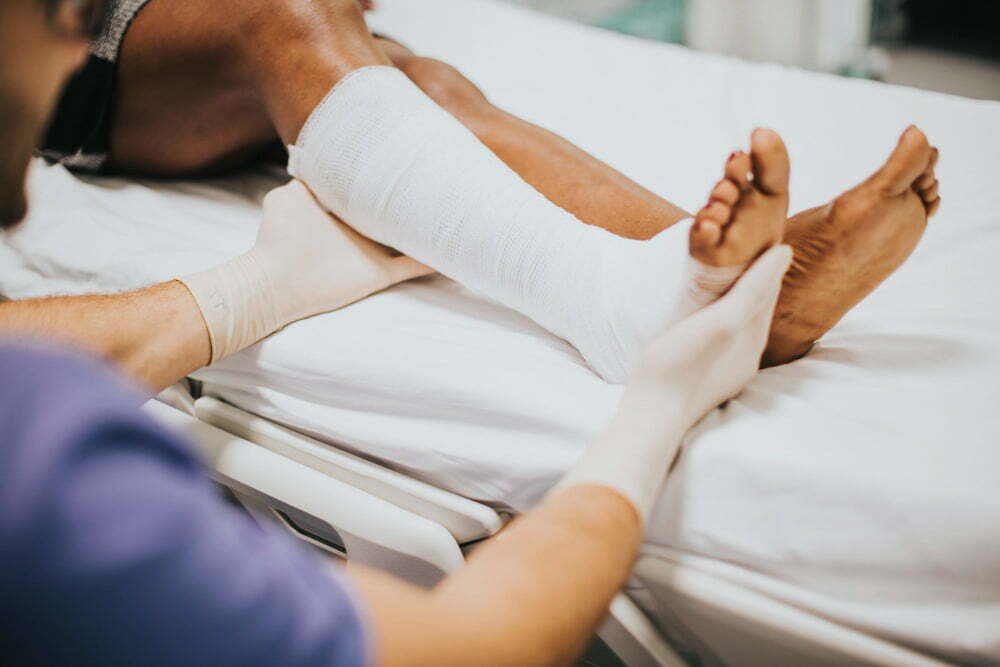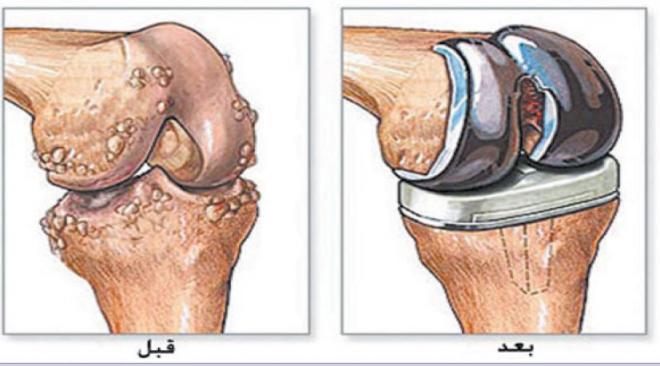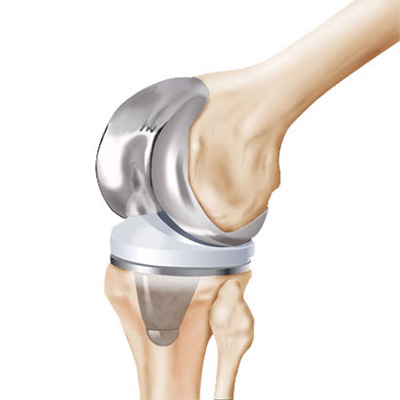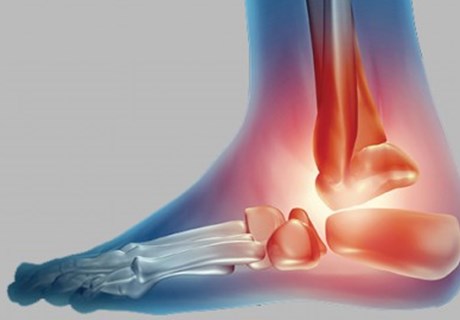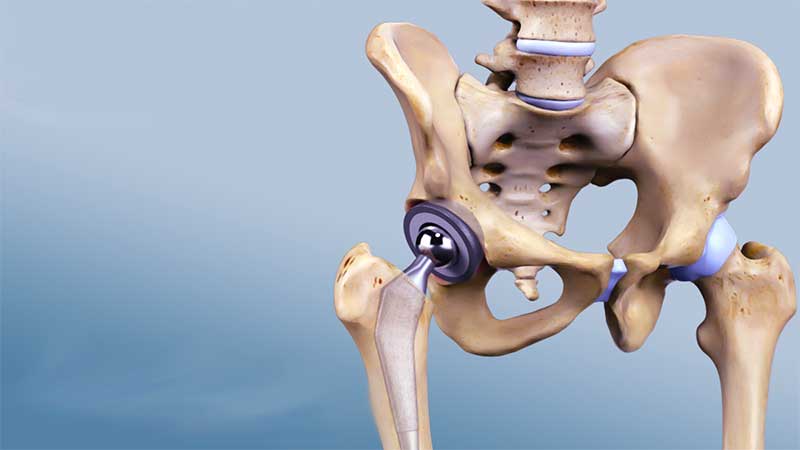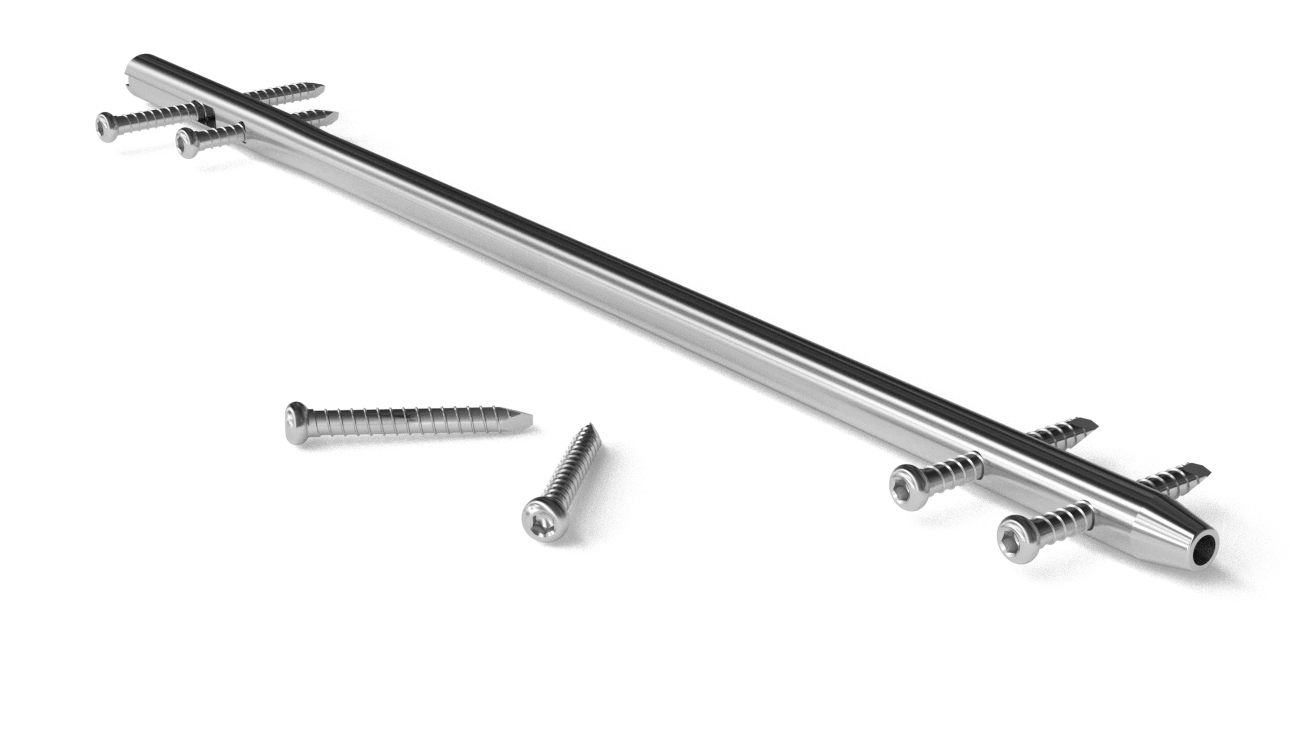?Best Ways to Treat Coccyx Inflammation and How Long Does This Condition Last
Treatment of Coccyx Inflammation, This article contains complete information related to coccyx inflammation, including its causes, symptoms, prevention methods, and treatment. You can follow us to learn about any new developments related to this matter.
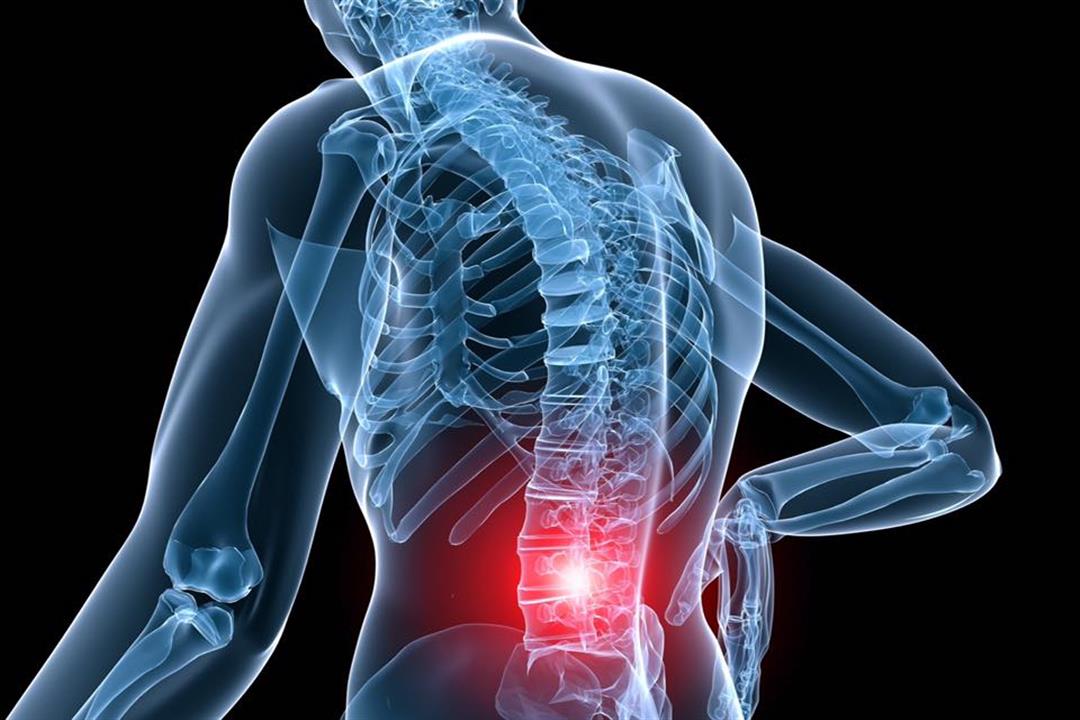
Treatment of Coccyx Inflammation
Many people suffer from pain in the coccyx area, and the cause behind this could be coccyx inflammation. Fortunately, there are steps that can be taken to treat this inflammation and alleviate the accompanying pain. In this article, we will review some important guidelines for treating coccyx inflammation, which include the following:
- Rest and avoid excessive pressure: One of the most important steps in treating coccyx inflammation is getting enough rest, as well as avoiding sitting on the floor or hard chairs, and using a coccyx pillow to relieve pressure on this painful area.
- Massage and light exercise: Massage is an important part of treating coccyx inflammation and can help relieve tension and improve blood circulation in the affected area. It is recommended to use relaxation oils during massage.
- Avoid irritating factors: Avoiding factors that can cause irritation to the coccyx area is an important part of treating coccyx inflammation. It is important to avoid sitting or standing for long periods, and to use comfortable pillows while sitting.
- Medication: In cases of severe coccyx inflammation, the person may need medication to relieve pain and inflammation. Topical non-steroidal pain relievers can be used to relieve local pain.
- Physical therapy: Doctors may sometimes recommend physical therapy sessions to treat coccyx inflammation. These sessions may include techniques such as rehabilitation exercises, heat therapy, and infrared radiation.
Causes of Coccyx Inflammation
- Local bruising: Coccyx inflammation may occur as a result of falling on the coccyx, which can cause inflammation in the ligaments or an injury to the coccyx. The pain is often described as sharp, burning, and very painful, and it can be long-lasting and difficult to diagnose.
- Problems in the sacrococcygeal joint: Doctors often describe the pain resulting from falling on the buttocks as coccyx pain, where this pain occurs due to problems in the sacrococcygeal joint between the coccyx bone and the sacrum bone.
- Falling on the back: Falling on the back can lead to bruising, fractures, or dislocation of the coccyx bone, resulting in pain.
- Sciatic nerve compression: Sciatica usually occurs due to compression of the sciatic nerve under the spinal column, and it can be one of the potential causes of sciatic nerve inflammation.
- Various medical conditions: Sciatic nerve inflammation is a common symptom of several different medical conditions, such as ulcerative colitis, rheumatoid arthritis, and pelvic inflammatory disease. However, 90% of cases of sciatic nerve inflammation can be identified by specific causes.
- Other factors: There may be other factors contributing to coccyx inflammation, such as prolonged sitting, infection, cancerous tumors, and some autoimmune diseases.
Advanced therapeutic techniques to overcome coccyx inflammation treatment with Dr. Amr Amal.
Symptoms of Coccyx Inflammation
Many people may experience pain and problems in the coccyx area, and coccyx inflammation could be one of the main causes behind this. Here are some symptoms that may indicate inflammation in the coccyx area:
- Severe pain: People with coccyx inflammation suffer from severe and acute pain in the coccyx area. The severity of the pain varies from person to person, but it is usually extremely painful and may increase with prolonged sitting or movement.
- Discomfort while sitting: People with coccyx inflammation experience extreme discomfort when sitting. The pain can be sharp and annoying, making it difficult to continue sitting for long periods.
- Swelling and redness: Coccyx inflammation may be accompanied by swelling and redness in the affected area. The redness may be noticeable, and the swelling increases discomfort and pressure on the area.
- Difficulty in getting up and sitting: People with coccyx inflammation may have difficulty getting up and sitting due to severe pain. They may feel discomfort when getting up and want to move constantly to relieve the pain.
- Feeling of burning and heat: Those with coccyx inflammation may feel a burning sensation and heat in the area, which can increase discomfort and tension. These symptoms can be extremely uncomfortable and affect daily life.
Benefit from the expertise of Dr. Amr Amal in finding long-term solutions for treating coccyx inflammation. For more information on the symptoms of coccyx cartilage prolapse, read this article.
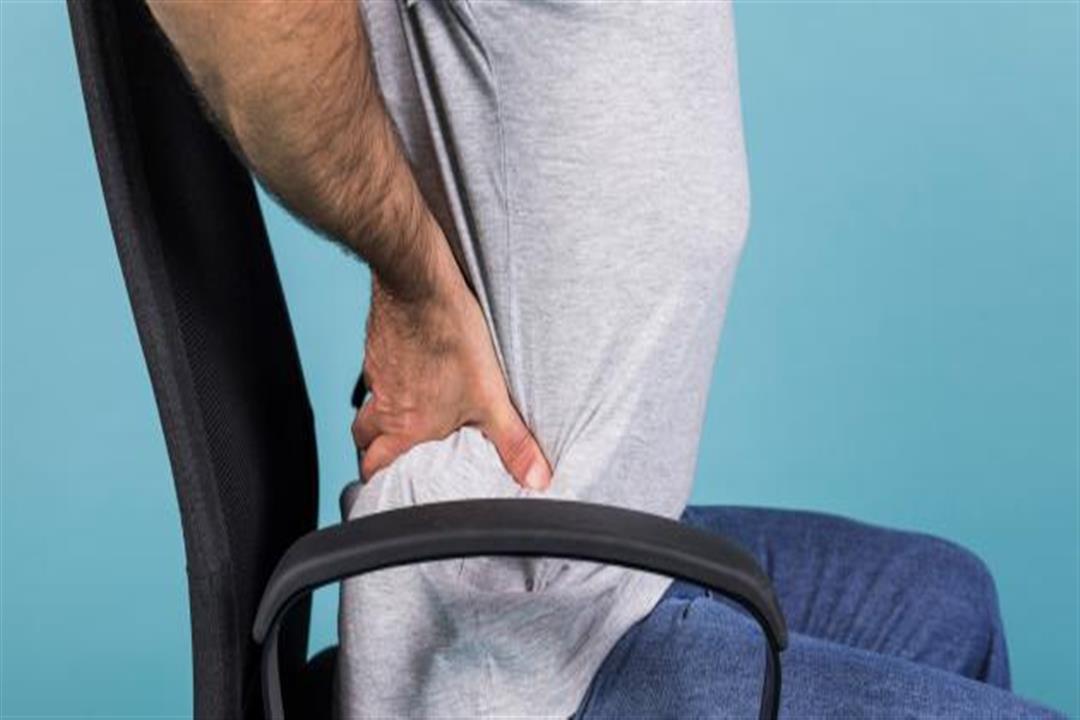
Diagnosis of Coccyx Inflammation
Some people may experience painful and burning sensations in the coccyx area, and this pain could be related to coccyx inflammation. In this article, we will learn about the diagnosis of coccyx inflammation through medical methods, including the following:
- Medical history and symptoms: The first step in diagnosing coccyx inflammation is gathering the medical history and listening to the symptoms the patient is experiencing. The most common symptoms accompanying coccyx inflammation are severe and acute pain, a burning sensation in the coccyx area, and the patient may also complain of difficulty sitting normally or leaning on the affected side.
- Clinical examination: After gathering the medical history and listening to the symptoms, the doctor will perform a clinical examination to check for the presence of coccyx inflammation. The clinical examination includes checking for pain, swelling, and redness in the coccyx area.
- Supplementary diagnostic tests: In some cases, the doctor may resort to performing some supplementary diagnostic tests to confirm the diagnosis of coccyx inflammation. These tests may include X-rays to check for any changes in the bone structure and joints in the coccyx area.
- Laboratory tests: In some cases, the doctor may order some laboratory tests to confirm the final diagnosis of coccyx inflammation, including a blood test to check for signs of inflammation and rheumatism.
- Consultation with a tissue specialist: In some rare cases, the diagnosis of coccyx inflammation may require consultation with a tissue specialist. This is done by performing a biopsy from the coccyx area and analyzing it in the laboratory to detect any changes in the tissues.
Can Coccyx Inflammation Heal?
Coccyx inflammation is a medical condition that affects the human coccyx and the area beneath it. Patients may feel pain in the lower back area, and it is diagnosed by doctors through clinical examination and inquiring about the patient’s medical history.
Although coccyx inflammation is not generally considered a serious condition, it can cause many discomforts for those who suffer from it. The treatment for coccyx inflammation varies depending on the patient’s condition and the severity of the symptoms.
Traditional treatment for coccyx inflammation includes taking pain relievers and applying ice to the affected area to reduce pain and inflammation. Doctors may also recommend getting adequate rest and avoiding prolonged sitting on hard chairs.
In more advanced cases, patients may be referred to physical therapy or functional therapy to strengthen the muscles and improve body posture. Although coccyx inflammation can last for a long time, most cases gradually improve over time.
However, patients should be cautious of certain activities, such as prolonged sitting and rough cycling, to avoid exacerbating the symptoms and recurrence of coccyx inflammation. If the patient experiences chronic pain or worsening symptoms, they should consult a doctor for an accurate assessment and appropriate treatment plan.
Dr. Amr Amal: The first step towards getting rid of pain and treating coccyx inflammation. To learn more about treating lower back pain, click here.
How Long Does Coccyx Inflammation Last?
Coccyx inflammation is a painful and annoying condition for many people, and you may wonder how long the inflammation lasts and what it causes. It’s worth noting that the duration of coccyx inflammation varies from person to person and depends on several factors.
Usually, coccyx inflammation lasts for a period ranging from several days to several months. Initially, it is recommended to reduce inflammation and pain by using cold or hot compresses on the affected area for 20 minutes. It is also advisable to avoid prolonged sitting and perform massage and rubbing exercises to relieve pain.
Over time, the pain and inflammation may gradually subside. If the pain and swelling persist continuously and become disturbing for an extended period, it is essential to consult a doctor to assess the health condition.
When is Coccyx Inflammation Serious?
Coccyx inflammation is a common condition and can often be managed at home and naturally. However, coccyx inflammation can be serious in some cases. The following symptoms should be monitored carefully:
- Increasing and worsening pain: If the pain in the coccyx area continues to increase and is not relieved by home remedies or medical treatments, it may be a sign of serious complications.
- Worsening signs of inflammation: If the swelling in the coccyx area increases, or the bruises turn into severe swelling and redness, it may indicate a serious inflammation.
- Persistent swelling and redness: If the swelling and redness persist for a long time without improvement, it may be a sign of a serious problem.
If these symptoms are present, it is necessary to consult a doctor to assess the condition and determine if it requires medical treatment or additional procedures.
Chronic coccyx inflammation should be diagnosed and treated with the assistance of a qualified doctor to avoid the problem from worsening and causing health complications. Rest assured that effective and non-surgical treatment of coccyx inflammation is provided by Dr. Amr Amal.
How Should a Patient with Coccyx Inflammation Sleep?
Many people face problems with the coccyx and its accompanying inflammations, leading to acute and chronic coccyx pain. This pain affects the patient’s quality of life and ability to perform daily activities normally. However, people with coccyx problems can alleviate pain by following some important guidelines to improve the quality of their sleep, which include the following:
1. Using a medical coccyx pillow: A medical coccyx pillow may be suitable for those with coccyx problems, providing the necessary support and comfort for the spine. This pillow also helps reduce hemorrhoid pain, joint pain, sciatica, and post-surgical pain.
2. Healthy sleeping position:
- Sleeping on the side of the body is considered one of the best positions for people with coccyx pain. The patient can place a small pillow or a long pillow between their knees to support the spine and achieve a healthy alignment between the pelvis and hips.
- Placing a small pillow under the knees when sleeping on the back can help relieve pressure on the spine.
- Having a pillow under the stomach while sleeping on the stomach can also help reduce coccyx pain.
3. Rest and relaxation:
- The patient should take some rest to relieve pain and soothe the coccyx.
- It is important to avoid sitting on the floor or hard chairs, which can increase pressure on the coccyx.
- The long pillow can be used while sitting to provide additional support and relieve pain.
4. Applying warm compresses:
- Warm compresses can be applied to the coccyx area to relieve pain and inflammation.
- It is preferable to use warm compresses for 15-20 minutes several times a day.
The patient should consult a specialist doctor for an accurate diagnosis and appropriate treatment plan. The patient should also follow the doctor’s instructions regarding prescribed medications, suitable physical exercises, and permissible daily activities.
How to Distinguish Between Coccyx Pain and Anal Fissure?
If you are suffering from severe pain in the coccyx area and want to know how to distinguish between coccyx pain and anal fissure, this medical guide will help you understand the differences between the two conditions and the steps you can take for proper treatment, which include the following:
Coccyx Pain
-
- Distinctive signs: Coccyx pain is considered one of the most common diseases in the coccyx area, and it usually causes acute pain and itching in the area near the anus.
- Main symptoms: The symptoms accompanying coccyx pain, such as pain and itching, are more pronounced when sitting for long periods or during physical exertion. It may also be accompanied by severe pain during sitting or movement and difficulty in moving or bending.
- Causative factors: Coccyx pain can generally be caused by irritation of the nerves in this area due to injury, infection, or even constipation.
- Diagnosis: The diagnosis is usually based on analyzing the patient’s symptoms and medical history. A physical examination of the area and X-rays may be necessary to rule out other conditions.
Anal Fissure
-
- Distinctive signs: An anal fissure is characterized by the formation of a solid or irregular lump that appears in the coccyx area, and its size and shape can vary between individuals.
- Main symptoms: An anal fissure may be accompanied by symptoms such as persistent pain or bleeding in the coccyx area. The pain may increase during sitting or bowel movements, and there may also be swelling, redness, and inflammation in the affected area.
- Causative factors: An anal fissure can have various causes, including inflammatory bowel diseases, infection, or even previous surgery in the area.
- Diagnosis: Accurate diagnosis may require a physical examination of the area and additional tests, such as examination using a proctoscope or imaging of the internal intestine.
Get important tips for pain relief and effective treatment of coccyx inflammation from Dr. Amr Amal. For more information on lower back pain, its causes, and how to get rid of it Click here.
Here’s the translation of your text into English while maintaining the same HTML structure and converting the Arabic link text to English:
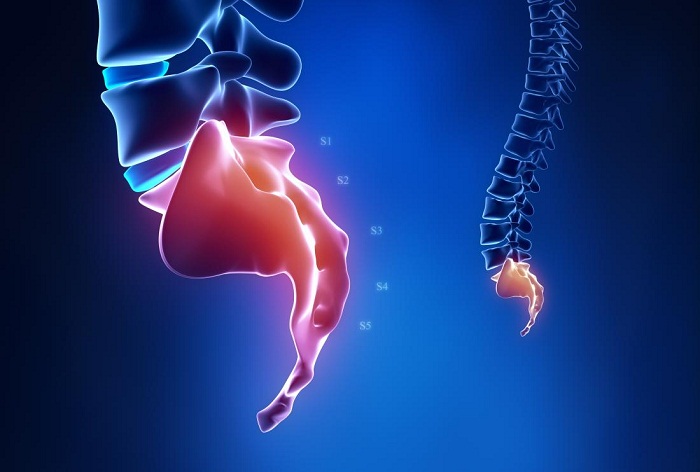
Best Doctor for Coccyx Inflammation Treatment in Egypt
Dr. Amr Amal is one of the best specialized doctors in treating coccyx inflammation in Egypt. Dr. Amal has extensive experience in the field of orthopedic and joint surgery, known for his exceptional skills in this field.
Dr. Amr Amal graduated with a Bachelor’s degree in Orthopedic Medicine from Ain Shams University College of Medicine with honors and worked as a fellow in Ain Shams University hospitals for three years, also serving as an assistant lecturer in the same hospital for five years.
Orthopedic surgery is a sensitive and complex matter, and patients need to find a trustworthy doctor to get the best possible services and results. Dr. Amr Amal is an ideal choice for patients suffering from coccyx inflammation and lower back pain.
Patients can review previous patient ratings for Dr. Amr Amal to ensure the quality of his services. Dr. Amal offers all types of various orthopedic surgeries, including knee joint replacement surgeries, in addition to the exceptional treatment he provides for back pain and spinal conditions.



